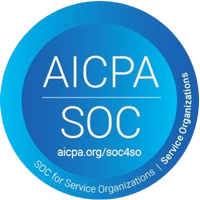At Apploi’s Customer Advisory Board roundtable discussion about the nursing shortage, industry leaders discussed how new technologies affect healthcare accessibility. All our panelists agreed that accessibility in healthcare is a top concern for the industry’s future.
Healthcare Technology’s Growing Role
Although many healthcare organizations were already embracing new technologies before COVID-19 restrictions were in place, there’s no doubt the pandemic accelerated this process. Virtual caregiving was already on the rise—but when telehealth became a necessity, many organizations acted fast to implement the right tools.
The past few years have been a true trial by fire for new healthcare technology. The demands of the pandemic forced healthcare workers to rapidly adjust to new processes—which is often one of the hardest parts of rolling out new technologies. In 2018, experts predicted telehealth would grow from a $1.9 billion industry to one worth over $13 billion by 2025. This forecasted growth was staggering, even without factoring in the pandemic.
The rapid adoption of new healthcare technologies has increased access in many cases. Just as critically, however, it has also exposed existing issues that may result in barriers to healthcare access if not addressed.
Better Access for Rural and Low-Income Patients
Telehealth is more accessible to many patients, especially those who can’t leave their homes. While telehealth is a boon for many, it also poses issues for equitable care.
To make telehealth accessible for all patients, we first need more widespread access to broadband internet. Currently, broadband is out of reach for many rural and low-income Americans. That’s a serious problem for healthcare accessibility.
According to the FCC’s 2020 broadband report, about 19 million Americans currently lack access to broadband. The FCC also estimated that a quarter of all rural residents and a third of tribal residents don’t have broadband access. That’s already a huge number of people, but other experts disputed the findings, arguing the reality was likely much more extreme. The FCC’s research methods may have greatly underestimated the real number of Americans without internet access. Bloomberg, for instance, put this number closer to 40 million. The Brookings Institution, meanwhile, estimated that anywhere from 6 to 12% of Americans don’t have broadband access.
So what can healthcare leaders do? One important step is to become advocates for broadband accessibility. When we make it clear that internet access issues are also healthcare accessibility issues, we powerfully reframe the conversation around widespread and affordable internet.
Creating Usable Interfaces for Patients With Disabilities
Broadband restrictions weren’t the only accessibility issues Apploi’s roundtable panelists explored. Panelists also argued that the actual interfaces involved in telehealth hold a critical role in healthcare accessibility as a whole.
No matter why you’re accessing telehealth, the mobile interface will have a direct impact on the experience. For some, this might mean the difference between an easy and frustrating appointment. For others, however, the consequences of poor mobile interfaces are more dire. In worst case scenarios, inaccessible interfaces might prevent users from getting care at all.
Only 62% of American adults with disabilities say they own a computer, reports the Pew Research Center. By comparison, 81% of adults with no disability have one. The discrepancy also exists for smartphones, which 72% of disabled adults report owning, compared to 88% of other respondents. This disparity is perhaps clearest when you understand that 15% of Americans with any disability say that they “never” go online, compared to 5% of respondents without any disability. For some disabled Americans, digital healthcare isn’t yet an option.
This is a particularly pressing concern given the rising trend toward mobile-only internet use. To make sure we’re moving towards more accessible healthcare, we need to prioritize mobile accessibility in every instance. Healthcare technology will only be accessible when mobile devices are fully usable for patients with any physical and cognitive condition.
Focused Recruiting for Professional Access
Beyond the patient’s experience, there’s another side to healthcare accessibility. Our conversations around access wouldn’t be complete without also acknowledging that healthcare candidates have access issues of their own.
For many healthcare workers, accessing technology is one of the first hurdles to finding a job. Strategies like social media recruiting are only effective if job seekers can find them. Not everyone has a smartphone or an internet connection, and equitable hiring is hard to accomplish while there’s such a barrier between job seekers and the recruiting strategies currently in place.
Fortunately, there are ways to reach people with much greater rates of success. While internet access is still spotty across the country, Pew has found that over 97% of Americans own a cellphone of some kind. If you’re having a hard time finding new healthcare candidates, consider leaning into text recruiting. This might also be a better process for extremely busy candidates, like working mothers, who can respond to your recruiting texts while occupied with other things.
Healthcare Staffing with Apploi
Apploi is on a mission to help healthcare recruit, hire, and manage talent more successfully. We give employers more control over their staffing by making hiring and document management simple and painless for both candidates and managers.
Interested in learning more about how you can recruit, hire, and onboard healthcare staff quickly? Contact us today for a free demo of our end-to-end talent management solution.
 Skip to main content
Skip to main content



